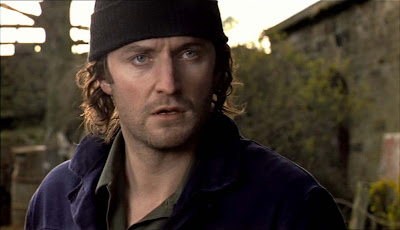It has taken me a long time to write this review, because it took me a long time to read the book. Not because it was too difficult or badly written. On the contrary – it was beautiful. So I read it twice.
Reading and objectively reviewing a novel that was written by someone you know and whose talents you find remarkable, whose breathtakingly beautiful artistic endeavours awaken a specifically scary, but exciting sentiment in a distant, dark corner of your heart, is not easy. Not easy at all.
Kevin Panozzo is a beautiful, kind and generous man. I still remember the first time I met him: he walked into our office and was introduced as our new colleague, quite a few years ago. My female colleagues were amazed at the sight of this beautiful specimen of a man who was so extremely different from the boring business suits that usually populated our offices.
I also remember one evening, it must be about 5 years ago now, when I had my very first conversation with Kevin about writing. Halfway through that conversation, he casually mentioned that he was working on and struggling with a little project of his own, a novel based on his time in Nice and Barcelona, something very personal and dear to his heart. Not once did he say that the story in the novel was in fact real, but now that I have finally read it, I can’t help but wonder just how autobiographical this story really is.
Kevin spoke with great passion about his project, the challenges of the writing process and his sheer inability to stop typing and say: “It’s done”. Every time I would ask him how he was doing, he would usually have started another round of editing. Not just a few tweaks in a few chapters, mind you. He would start from the very first sentence and work his way right to the very last page. Again, and again. And again.
It took Kevin just about 6 years to finalise the novel: “Tête Pressée”, and it shows. This was truly a labour of love: every other sentence is an absolute jewel and the incredible attention to detail is apparent throughout the entire novel. That is probably one of the reasons why I wanted to put the novel aside for a while and then read it again: I wanted to be absolutely sure that I hadn’t missed a single detail.
This is how Kevin describes his novel in the back cover blurb:
Calvin committed to memory his history in hopes of sparing himself the devastation of its repetition. But in the final analysis, was he any less doomed? Having persevered through personal trauma, he found contentment in Southern France, where he established a holiday-like existence, based largely on avoiding the traditional barbs of modern life. Then he met Klarysa Pavlichenko, the precocious granddaughter of an eccentric Ukrainian vintner. And everything changed. Set on the shores of the Mediterranean Sea at the end of the twentieth century, Tête Pressée follows a rowdy cast of characters in various states of obsession and pursuit, and offers a heady glimpse into the progression of a breakdown. With his highly ambitious, flamboyant first novel, Panozzo has betrayed an inner obsession to rival that of his tireless, raving characters. By turns aggressive and critical, sympathetic and forgiving, sober and brimming with drunken lunacy; ever poetic and scenic, Tête Pressée is a cracking work of literary fiction with enough whimsical banter and florid prose to bring Nabokov to full titter and grin from the grave.
“Tête Pressée” is difficult to describe. It doesn’t really fit into any specific genre: it’s a literary masterpiece that evolves from mystery novel over love story and from road movie to spy novel. I personally don’t see the resemblance with Nabokov that is mentioned on the back cover – that label is too restrictive, it doesn’t encompass the depth and width of Kevin’s unique novel. If I have to compare “Tête Pressée” to anything I can honestly say that the first few chapters reminded me of J.D. Salinger’s “The Catcher in the Rye”. Calvin Stony could easily have passed for an adult version of Holden Caulfield. When Kevin’s descriptions of the world around his protagonist are replaced with an outsider’s look into Calvin’s thoughts, his hopes and dreams, I was reminded of the intensity in one of my personal favourites: Fyodor Dostoevsky’s “Crime and Punishment”. In Calvin’s trusting, but heartfelt obsession with Klarysa and in his encounters with a certain woman in white, I was not reminded of any other novel or author, only of Kevin’s very own sincere, pure heart that shines through in the mesmerising words that he has put on paper.
“Tête Pressée” is one of those novels that you cannot describe in a way that will do it justice. Everytime I thought that I knew where the story was going, some new character would walk into Calvin’s life and turn it, and the story, upside down. And every time I thought I had Calvin figured out, Kevin would take me on a trip down Calvin’s memory lane that would send me right back to the drawing board. And I would be more intrigued than ever. I guess you’ll just have to experience it for yourself.
Just one more thing: I sincerely hope that Kevin does not make me wait another 6 years for his next novel!
Discover “Tête Pressée”, buy the novel on Amazon

















